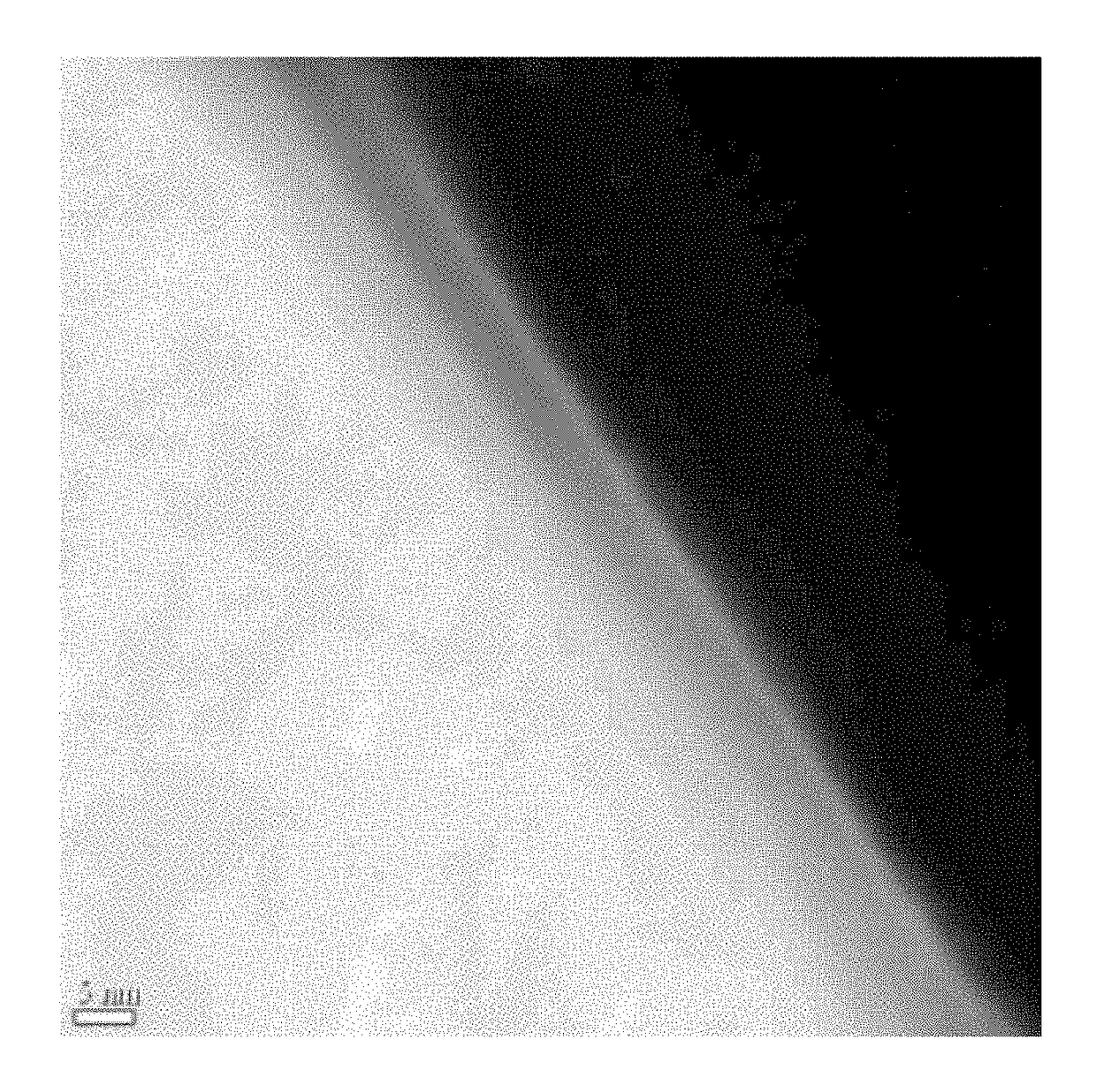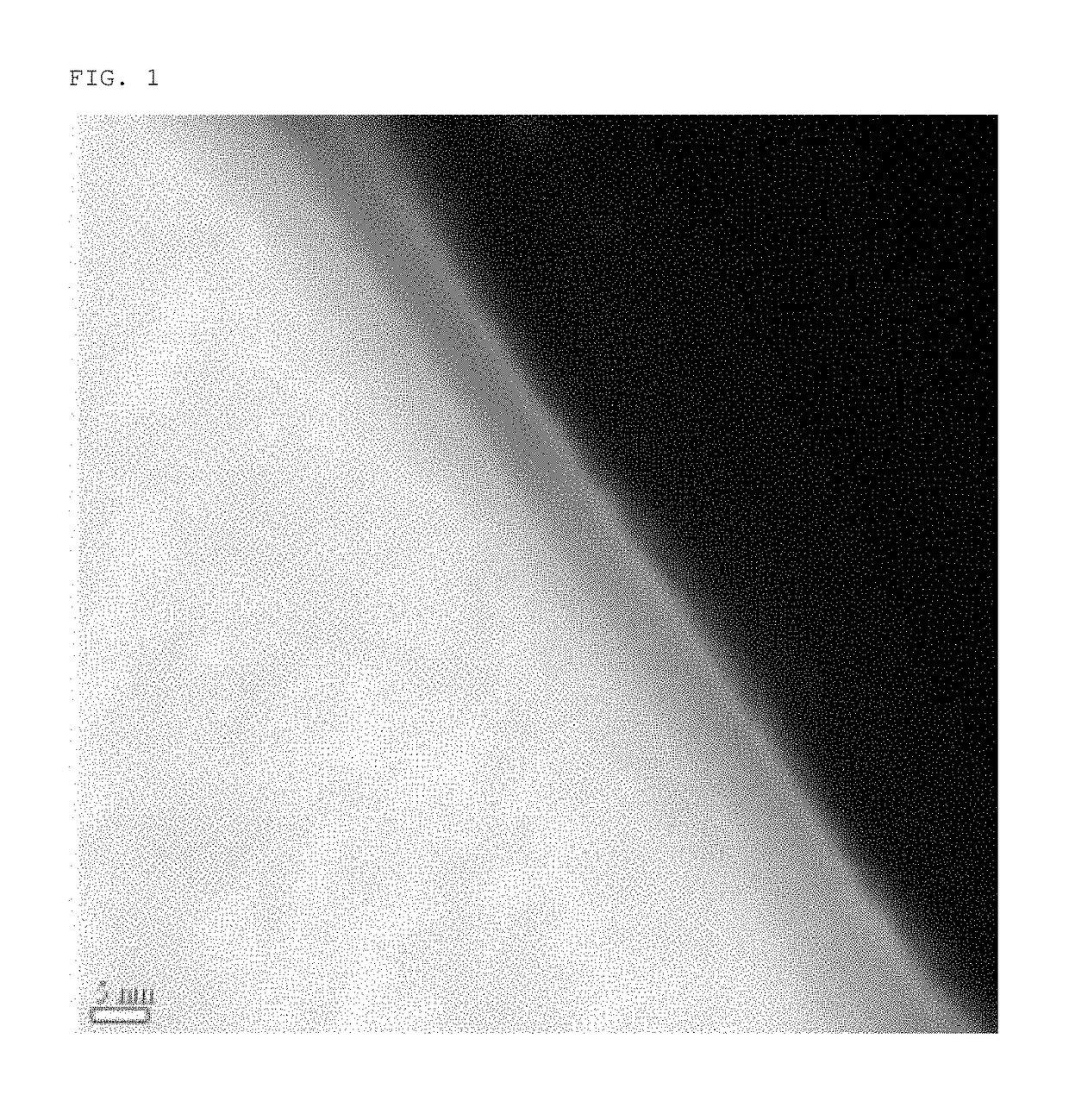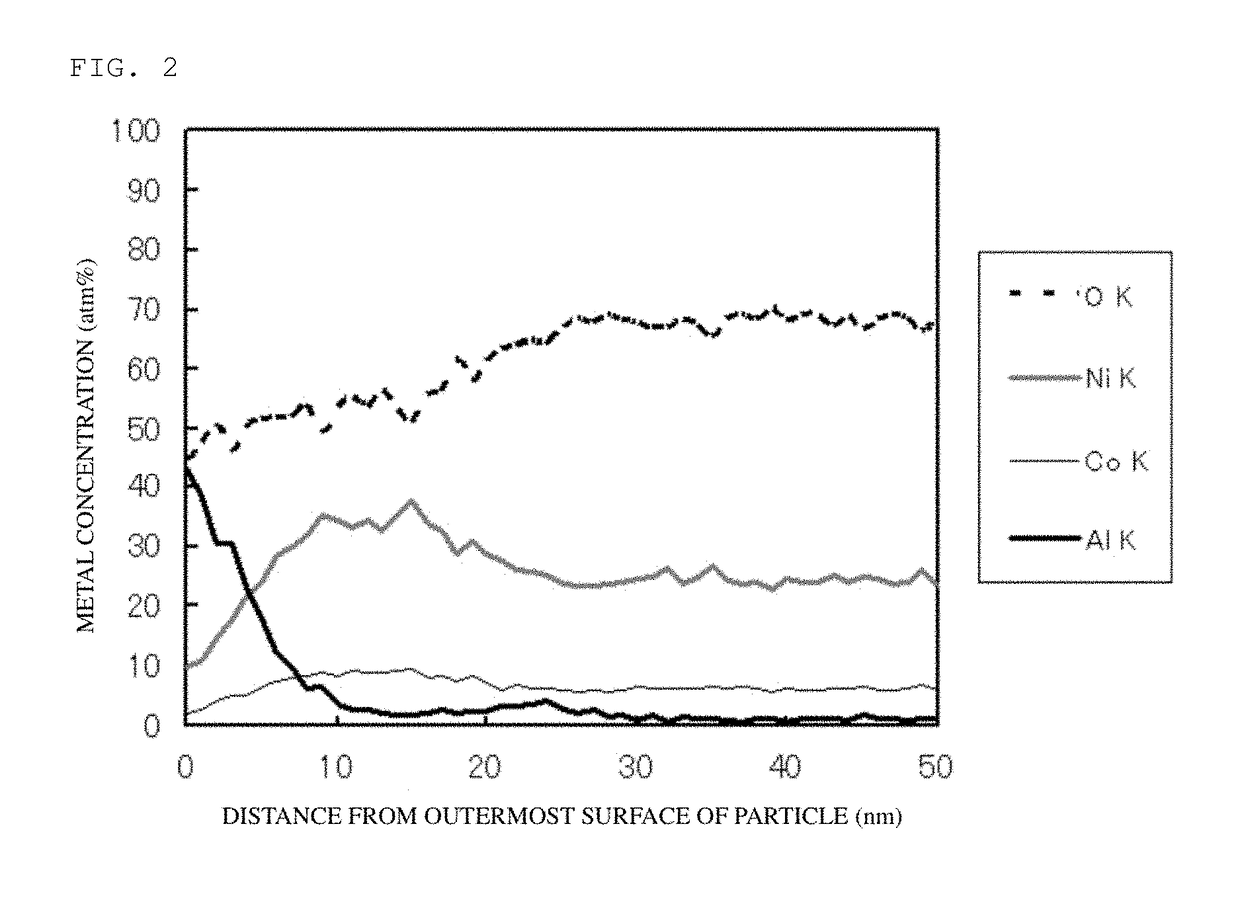Li—Ni composite oxide particles and process for producing the same, and non-aqueous electrolyte secondary battery
a composite oxide and composite oxide technology, applied in the field of li — ni composite oxide particles, can solve the problems of failure to solve the above-described problems, deterioration of thermal stability and storage properties of the resulting battery, and material deterioration in thermal stability and stability, so as to achieve good cycle characteristics and good cycle characteristics
- Summary
- Abstract
- Description
- Claims
- Application Information
AI Technical Summary
Benefits of technology
Problems solved by technology
Method used
Image
Examples
example 1
[0109]An aqueous solution prepared by mixing 2 mol / L of nickel sulfate with cobalt sulfate at a mixing ratio of Ni:Co of 84:16, and a 5.0 mol / L ammonia aqueous solution were simultaneously fed to a reaction vessel.
[0110]The contents of the reaction vessel were always kept stirred by a blade-type stirrer and, at the same time, the reaction vessel was automatically supplied with a 2 mol / L sodium hydroxide aqueous solution so as to control the pH value of the contents in the reaction vessel to 11.5±0.5. The Ni—Co hydroxide produced in the reaction vessel was overflowed therefrom through an overflow pipe, and collected in a concentration vessel connected to the overflow pipe to concentrate the Ni—Co hydroxide in the reaction solution. The concentrated Ni—Co hydroxide solution was circulated to the reaction vessel, and the reaction was continued for 40 hr until the concentration of the Ni—Co hydroxide in the respective reaction solutions in the reaction vessel and the concentration vesse...
example 2
[0117]The same procedure as in Example 1 was conducted except that the respective raw materials were mixed with each other such that the molar ratio between the Ni—Co hydroxide, aluminum hydroxide and bismuth oxide was Al / (Ni+Co+Al+Bi)=0.04, and the molar ratio between lithium hydroxide monohydrate and the other metals was Li / (Ni+Co+Al+Bi)=1.02, thereby obtaining Li—Ni composite oxide particles having a different chemical composition from that in Example 1.
example 3
[0118]The same procedure as in Example 1 was conducted except that the respective raw materials were mixed with each other such that the molar ratio between the Ni—Co hydroxide, aluminum hydroxide, bismuth oxide and antimony oxide was Al / (Ni+Co+Al+Bi+Sb)=0.04, and the molar ratio between lithium hydroxide monohydrate and the other metals was Li / (Ni+Co+Al+Bi+Sb)=1.02, thereby obtaining Li—Ni composite oxide particles having a different chemical composition from that in Example 1.
PUM
| Property | Measurement | Unit |
|---|---|---|
| BET specific surface area | aaaaa | aaaaa |
| temperature | aaaaa | aaaaa |
| secondary particle diameter | aaaaa | aaaaa |
Abstract
Description
Claims
Application Information
 Login to View More
Login to View More - R&D
- Intellectual Property
- Life Sciences
- Materials
- Tech Scout
- Unparalleled Data Quality
- Higher Quality Content
- 60% Fewer Hallucinations
Browse by: Latest US Patents, China's latest patents, Technical Efficacy Thesaurus, Application Domain, Technology Topic, Popular Technical Reports.
© 2025 PatSnap. All rights reserved.Legal|Privacy policy|Modern Slavery Act Transparency Statement|Sitemap|About US| Contact US: help@patsnap.com



